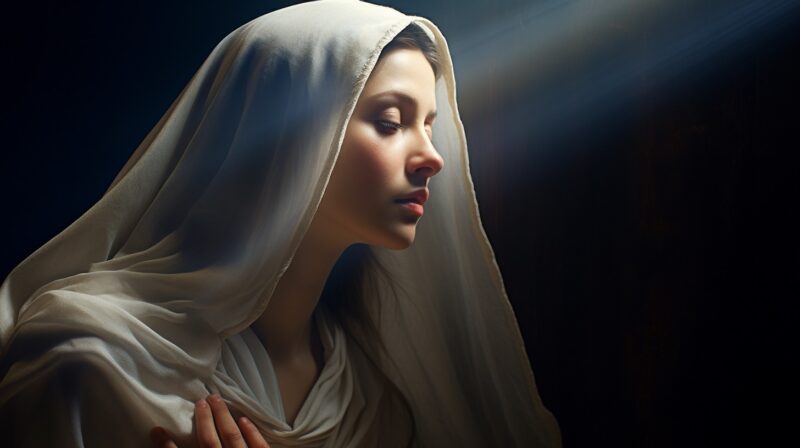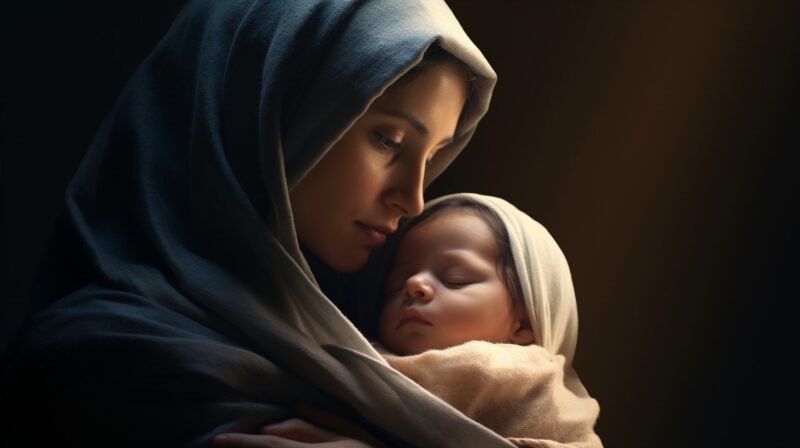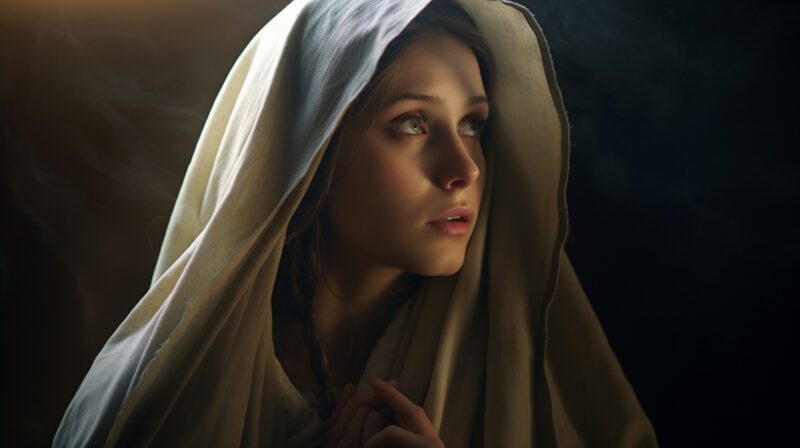The question of Mary’s age at the time of Jesus’ birth is a topic that has intrigued scholars, theologians, and the lay public alike for centuries.
Today, we will explore this subject with depth and clarity, shedding light on historical, theological, and cultural aspects surrounding this intriguing question.
Historical Context and Sources
To begin our exploration, it’s crucial to examine the primary sources that mention Mary, chiefly the canonical gospels in the New Testament and various apocryphal texts.
The gospels of Matthew and Luke provide narratives of Jesus’ birth, but they do not explicitly mention Mary’s age.
These texts, written several decades after the events they describe, focus more on the theological significance of Jesus’ birth than on detailed biographies of the individuals involved.
The apocryphal texts, which are writings about Jesus and his contemporaries that were not included in the canonical Bible, offer some insights but are often treated with skepticism by scholars.
For instance, the Protoevangelium of James, a text from the second century, suggests that Mary was around 14 or 15 years old when she gave birth to Jesus. However, the historical accuracy of this text is debated, as it was written much later than the events it describes.
Cultural and Societal Norms of the Time
Knowing the cultural context of 1st-century Judea is vital. During this period, it was common for girls to be betrothed and married at a young age, often in their early to mid-teens.
This practice was partly due to the lower life expectancy and the societal structure that placed a high value on childbirth and raising a family. It is reasonable to infer that Mary, as a young Jewish girl, would have followed the societal norms of her time.
Thus, the hypothesis that she was a teenager, possibly between 12 and 16 years old, at the time of Jesus’ birth is historically plausible.
Theological Perspectives

Christian Interpretations and Beliefs
Theological interpretations of Mary’s age often reflect broader beliefs about her role and significance within Christianity. For many Christians, Mary is seen as a figure of obedience, purity, and faith.
Her young age, as suggested by some texts, is sometimes interpreted to underscore her purity and her profound faith in God’s plan. In Catholicism and Eastern Orthodox Christianity, the veneration of Mary as the Mother of God (Theotokos) places great emphasis on her life and actions.
Her youth at the time of Jesus’ birth is often viewed as a testament to her extraordinary faith and the miraculous nature of Jesus’ birth.
Modern Scholarly Views
Modern biblical scholars and historians tend to approach the question of Mary’s age from a historical-critical perspective. This approach considers the socio-historical context of the texts and the likelihood of various scenarios based on historical evidence.
While recognizing the limitations of the available evidence, many scholars concur that Mary was likely in her early teens, aligning with the cultural norms of her time.
Cultural and Artistic Depictions
Mary’s age at the time of Jesus’ birth has significantly influenced artistic and literary representations throughout history. In Renaissance art, for instance, Mary is often depicted as a young woman, embodying ideals of purity and maternal gentleness.
This portrayal aligns with the perception of her as a young mother, which has been a powerful image in Christian iconography. In literature, Mary’s youth is sometimes highlighted to emphasize her innocence and her profound trust in God.
This depiction is evident in various poems, hymns, and religious writings across different Christian traditions.
Contemporary Reflections
In contemporary times, discussions around Mary’s age have sometimes intersected with broader conversations about women’s roles, autonomy, and societal expectations.
While traditional views continue to prevail in many religious communities, there is also a growing interest in knowing Mary’s life and experiences in a more historical and humanized context.
Revisiting Historical Evidence

Limitations of Archaeological Data
When examining the life of Mary and, by extension, the birth of Jesus, the archaeological evidence is sparse. This scarcity is not unusual for figures from antiquity, especially for those not belonging to the elite classes.
Consequently, our understanding of Mary’s life, including her age at Jesus’ birth, relies heavily on textual sources and socio-historical analysis rather than concrete archaeological findings.
The Role of Oral Traditions
In understanding the historical context of Mary’s life, it’s important to consider the role of oral traditions in preserving and transmitting information.
In the 1st century, stories about significant events and figures, like Mary and Jesus, were often passed down orally before being written down.
This oral tradition could influence the details presented in the texts, including aspects like Mary’s age.
FAQs

Are there any specific Jewish customs or laws from Mary’s time that would influence her age at marriage?
Yes, Jewish customs and laws during Mary’s time typically encouraged marriages at a young age. The Mishnah, a Jewish legal text compiled around 200 CE, suggests that girls were often betrothed near puberty, around the age of 12 or 13.
Has the Catholic Church made any official statements about Mary’s age?
The Catholic Church has not issued any official declarations regarding Mary’s exact age at the time of Jesus’ birth. The focus is more on her role as the Mother of Jesus rather than on her specific age.
Are there any non-Christian texts from the time that mention Mary’s age?
Non-Christian texts from that era, such as Roman or Jewish historical writings, do not provide details about Mary’s age. Her age is primarily discussed in Christian texts and traditions.
How do contemporary historians view the Protoevangelium of James’ account of Mary’s age?
Contemporary historians generally view the Protoevangelium of James as an apocryphal text with limited historical reliability.
Its late composition date means it’s more reflective of Christian beliefs and traditions of its own time rather than being a factual historical account.
Is there any iconography in the early Christian church that depicts Mary’s age?
Early Christian iconography often does not explicitly depict Mary’s age. However, she is usually portrayed as a young but mature woman, which aligns with early Christian respect and veneration but does not provide a specific age indication.
Does the Eastern Orthodox Church have a different view on Mary’s age compared to Western Christianity?
The Eastern Orthodox Church, like Western Christianity, venerates Mary as the Mother of God but does not officially specify her age at the time of Jesus’ birth. The focus is on her spiritual purity and role in salvation history rather than her exact age.
Summary
The question of Mary’s age when she had Jesus opens a window into the rich tapestry of historical, theological, and cultural narratives that have shaped Christian thought for centuries.
While definitive answers may elude us due to the limitations of historical evidence, the exploration of this topic reveals much about the values, beliefs, and artistic expressions that have developed around the figure of Mary and the birth of Jesus.
Knowing Mary’s likely young age at the time of Jesus’ birth not only informs our historical understanding but also enriches our appreciation of her role and significance in Christian history and theology.
While the exact age of Mary at the time of Jesus’ birth remains a subject of speculation, the exploration of this question illuminates various aspects of ancient society, Christian theology, and cultural expressions.
It invites us to engage with the past in a way that is both scholarly and reflective, appreciating the complexities and nuances of historical and religious narratives.
